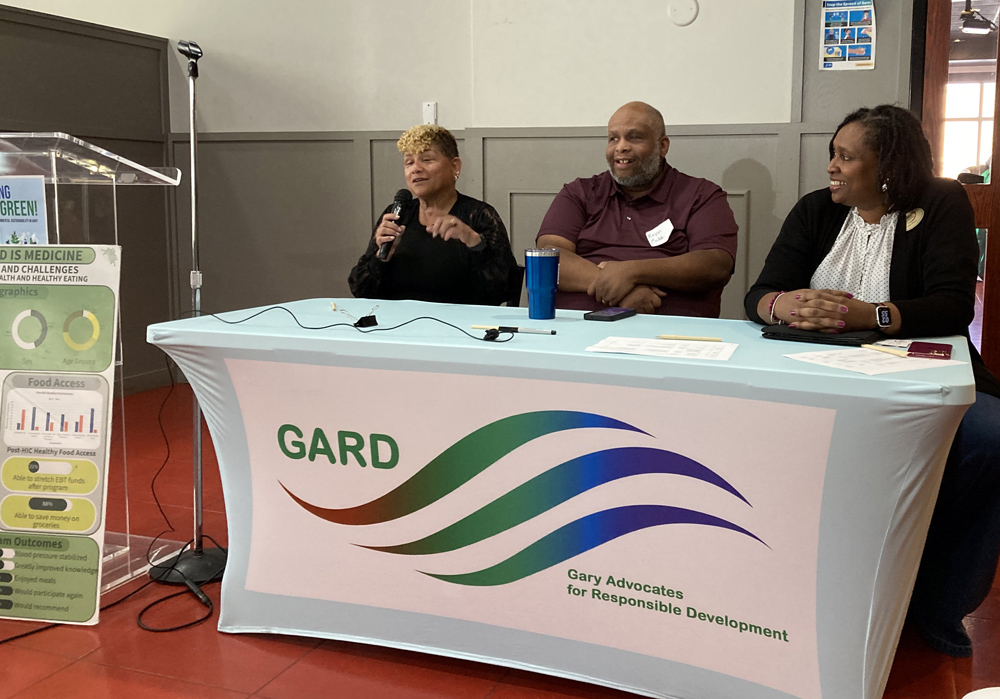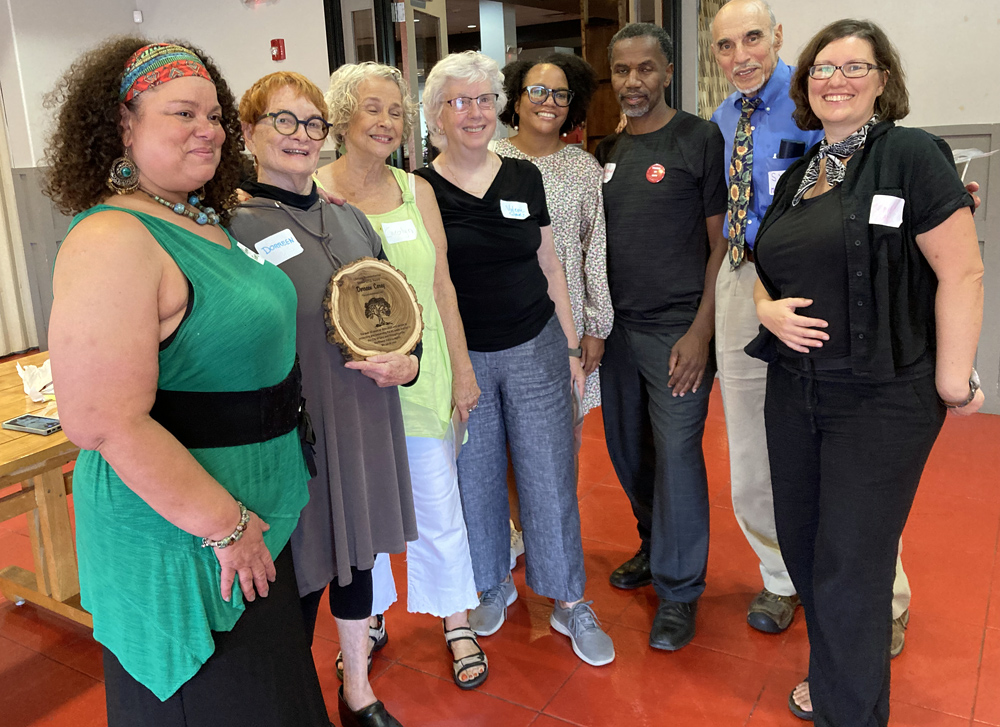
Panel discussion with Freida Graves (l-r) and Kevin Cobb of FAITH Farms, and Ami Reese of the Center for Workforce Innovations
Messages from the "Growing Gary Green Conference"
Contributed By: The 411 News
GARD shows how communities become better places to live and work
“Yes we can” was GARD’s message to the 100-plus attendees at Growing Gary Green: A Conference on Environmental Sustainability in Gary, Saturday. “If we did it, you can too” was the message echoed during the day from organizations like GARD that are helping to make their communities a better place to live.
“The conference is designed to provide a foundation for community discussion and engagement in the decision-making, planning and actions that will contribute to making Gary a healthy and sustainable city now and in the future,” said GARD President Dorreen Carey.
Protecting the natural environment drew GARD (Gary Advocates for Responsible Development) into action in 2021 when Fulcrum BioEnergy asked the Indiana Dept. of Environmental Management for permission to construct a garbage processing facility in Gary’s Buffington Harbor, on the city’s western shores of Lake Michigan.
Fulcrum said the facility would use “gasification” technology to convert household garbage into sustainable aviation fuel (SAF) for jet aircraft engines.
GARD countered with protests and legal complaints that the plant would threaten the city’s land, air, and water resources. Those resources must be protected, GARD argued, for the people who already live and work in the state’s most polluted environment.
GARD also said the technology didn’t work; that it had been tried before by others and had failed.
Fulcrum said it was building a plant near Reno, Nevada, smaller than the one proposed for Gary that would prove the technology worked.
GARD’s legal actions had delayed the construction permit of the Gary facility. In May 2024, IDEM gave Fulcrum permission to construct the Gary facility, but the company was in trouble. Because of technology problems, the Reno plant never filled rail tank cars with the fuel Fulcrum promised.
Soon after, Fulcrum declared bankruptcy and closed its plant and offices.

GARD members Kimmie Gordon, (l-r), Dorreen Carey, Caroline McCrady, Valerie Denney, Lorie Latham, Kwabena Rasuli, Sy Moskowitz, and Jennie Rudderham
Community HealthNet CEO Dr. Janet Seabrook answered the call for action in 1998, with the opening of Gary’s first community health center. “Gary ranked 4th in the nation as most in need of a community health center,” Dr. Seabrook said. Today, CHN operates 9 health centers in Gary and surrounding communities.
The CHN mission is to serve the needs of all families and individuals of all income levels in need of medical and behavioral health care, regardless of their ability to pay.
Progressive Community Church set the example for action in 2014 when it turned an empty lot next door into a community garden, intended to be a source of fresh produce for the church and its neighbors on 6th and Rhode Island. Today’s garden is now FAITH Farms, operated by Progressive’s nonprofit FAITH CDC and feeds thousands across Gary.
FAITH CDC’s Freida Graves said the nonprofit’s mission is to be a participant in Gary’s food economy. “There are other community gardens in Gary. There is social and economic development to growing food in your own community. There are jobs.” FAITH CDC has trained middle and high school students to work in those gardens during the summer months.
Kevin Cobb is FAITH CDC’s project director for renewable energy. “We are working to bring a solar farm to Gary and locate it on an empty school lot.”
In 2019, Carmen McKee’s Oases Botanic Gardens turned the yards surrounding the old U.S. Army Reserve Training Center on Gary’s west 15th Avenue into a learning lab for home gardeners. McKee gives instructions on soils and which plant varieties to use. Oases also provides gardeners with free seeds.
“You don’t need to know a congressman to provide affordable housing,” said Project Neighbors’ executive director Paul Schreiner, but you have to maintain good relations with the zoning department. The Valparaiso nonprofit has been doing it for 50 years.
Driving through Gary, Schreiner saw many opportunities for affordable housing. “My advice, form a non-profit and get some allies,” Schreiner said. “Stick to the building code. Even though today’s new home sizes average 2,200 sq. ft, build smaller; it’s cheaper.”
GARD’s hard work on Fulcrum and its determination to stay active in environmental permit reviews and monitoring proposed developments in Gary that are not protective of community health and economic sustainability have paid off.
Their efforts, which had been self-funded, have earned financial support from the Builders Initiative and the Indiana Conservation Voters. “Their support made this conference possible. We are now an official 501(c)3 non-profit organization, approved by the IRS,” Carey said
GARD has asked US Steel Gary Works for a public presentation on its plans to burn wastes from plastics in its blast furnaces.
“Exchanging plastic for coke in the blast furnace will not improve the environmental impact of blast furnace emissions on the residents of Gary,” Carey said. “We need to know their plans for reducing carbon and health harming emissions.”
GARD maintains it is not against economic development; they just want it to be responsible and sustainable.
Story Posted:09/24/2024
|